Daleas (Dalea spp)
This includes several different species. All are cold hardy to 10°F, or lower, as well as tolerant of drought and reflected heat. They are generally medium to large shrubs that bloom some shade of purple in the fall or winter, which is always a bonus. There are two species of groundcover as well (Gold Dalea and Trailing Indigo bush). Attracts Butterflies
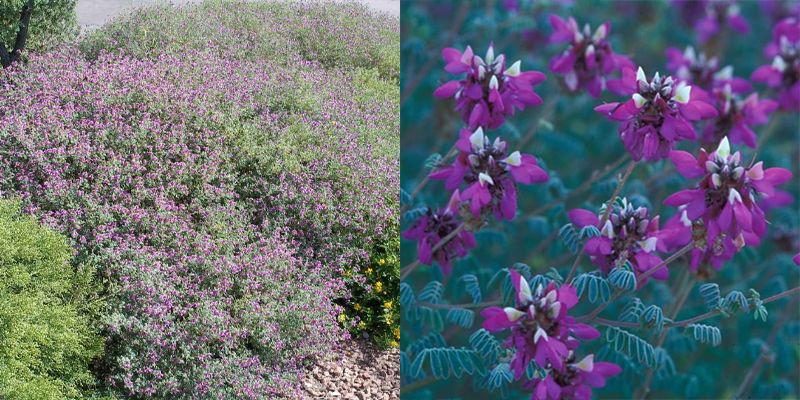
Dalea Bush & Flower
Valentine Emu (Eremophila maculate)
Is a tough Australian native that is not only cold hardy to 10°F but also blooms masses or red tubular flowers in February, hence the name! Just like the Daleas they are tolerant of drought and reflected heat. Valentine Emus also attracts hummingbirds!
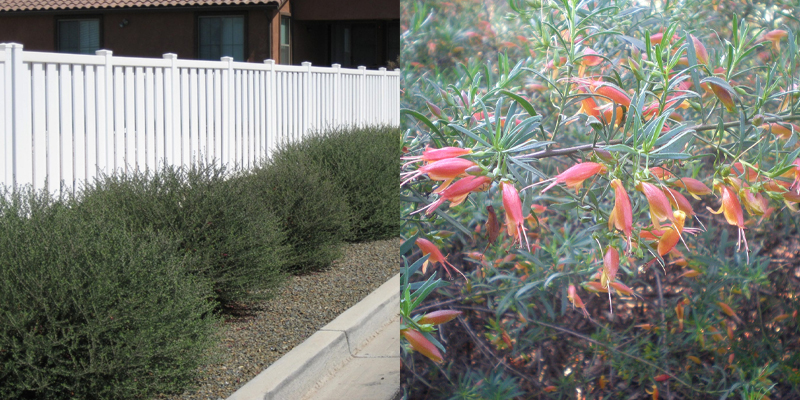
Valentine Emu Bush & Flower
Angelita Daisy (Tetraneuris acaulis)
Is a small native perennial that will bloom its heart out almost all year. They are hardy to -20°F and are tough as nails but you might not suspect so with those cheerful yellow flowers. They also attract songbirds and butterflies.
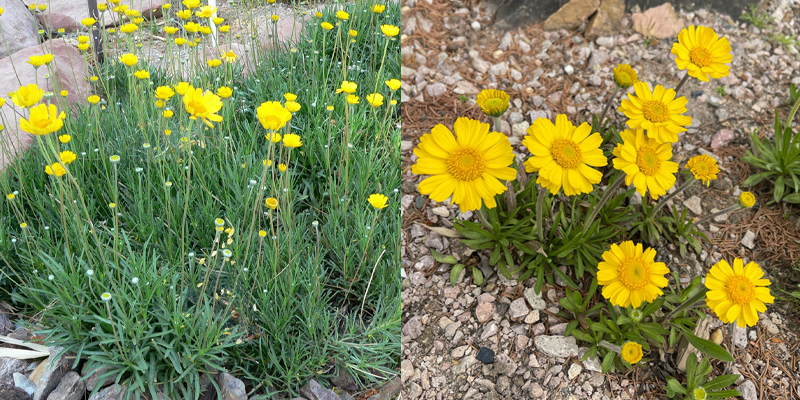
Angelita Daisy Bush & Flower
Penstemons (Penstemon spp.)
There are many species that are adapted to our region and are hardy to at least 10°F! Our native Parry’s Penstemon is a late winter bloomer and will also reseed itself in the landscape. Because not much else is blooming during that time they are magnets for hummingbirds looking for a snack.
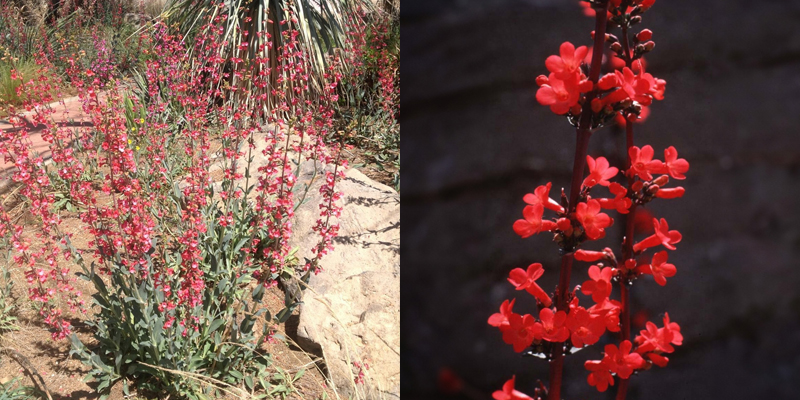
Penstemon Bush & Flower
Rangers (Leucophyllum spp.)
This is a shrub that checks off a lot of boxes. They are hardy to 10°F, evergreen, low water and tolerate reflected heat! There are many varieties available these days with varying mature heights and bloom colors to choose from. Texas rangers are Chihuahuan desert natives that bloom most heavily in response to changes in barometric pressure brought on by monsoons. They bloom on new growth so it is best to prune in early spring so you can really enjoy their summer flower show.

Leucophyllum Bush & Flower
Hesperaloes (Hesperaloe spp.)
This is another group of plants that has several species and cultivars available in the nursery. They are all hardy to at least -10°F! Red yuccas are quite popular in landscapes in Tucson because they are so carefree. Extremely cold hardy, drought tolerant, evergreen, tolerates reflected heat, no thorns AND hummingbirds love their flowers!

Hesperaloe Bush & Flower
Queen Victoria Agave (Agave victoriae-reginae)
The Queen Victoria is prized for its compact size and tight symmetrical rosette. Not only is it a stunning specimen Agave but they are also hardy to 10°F. Because of their smaller stature (typically 2’x2′ mature) they are great for containers and small planting areas or plant in groups for a stunning display.
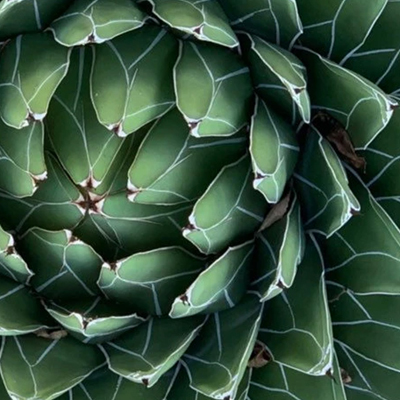
Queen Victoria
Bear Grass (Nolina microcarpa)
This is another great native plant that you can see growing out in Sonoita. They are hardy down to -10°F, low maintenance, drought tolerant, clean, and don’t have any thorns! They produce a pretty impressive tan flower stalks in the summer, mature plants can have a flower stalk 7′ tall or more!
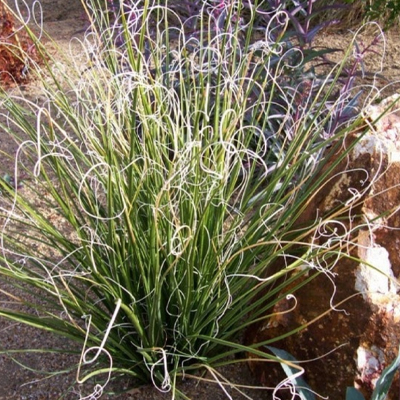
Bear Grass
Desert Willow (Chilopsis linearis)
You will be hard pressed to find a tree as cold hardy as our native desert willow. Not only are they hardy to -10°F but they also attract a variety of pollinators and birds. They produce an attractive display of light pink to purple blooms from late spring through early fall. There are several varieties available on the market with varying mature size, bloom color and some are podless.
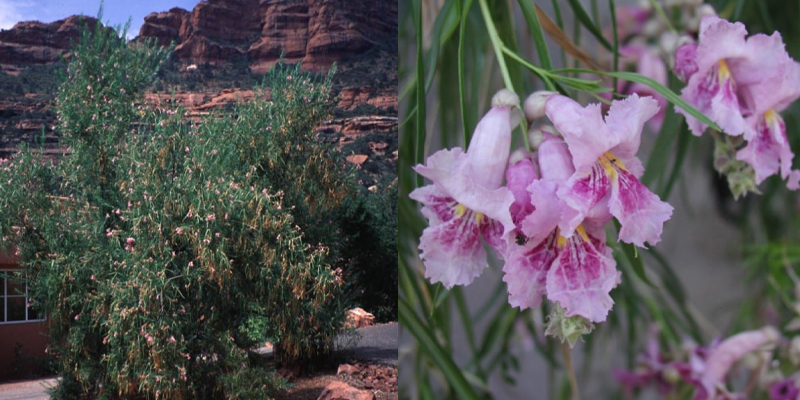
Desert Willow Bush & Flower
Texas Ebony (Pithecellobium flexicaule)
This is a South Texas native that is a great performer in Tucson. This extremely drought tolerant evergreen tree is hardy down to 10°F. It does have thorns but this provides an attractive site for native birds to nest in so this is a must have for bird watchers!

Texas Ebony
Blue Palo Verde (Parkinsonia florida)
This is the Arizona state tree! It is hardy down to 10°F and will only lose its leaves if there is extreme cold or drought conditions. An impressive display of golden yellow blooms will cover the tree in spring attracting butterflies and bees, the seed pods that follow are loved by granivorous (seed eating) birds.
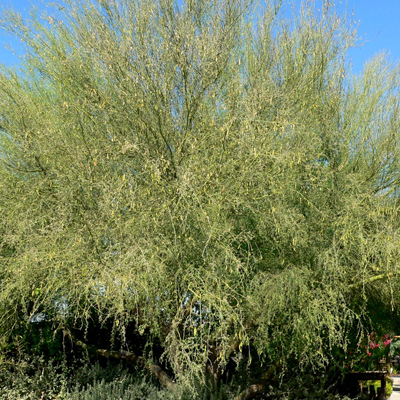
Blue Palo Verde
Red Push Pistache (Pistacia x Red Push)
If you miss the colors of autumn but don’t want a high water use tree then consider the Red Push Pistache. They are hardy to 10°F and put on quite the color display in the fall when their dark green leaves turn red, orange and yellow before dropping. They are dormant for a short period in winter and quickly flush out new leaves in spring with new growth having a red hue.
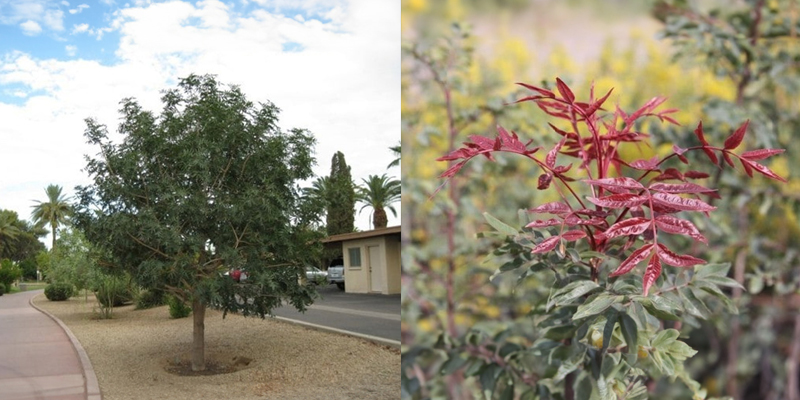
Red Push Pistache
Texas Mountain Laurel (Sophora secundiflora)
In late February the Texas Mountain Laurel begins to produce large, purple, wisteria like clusters of purple blooms that smell like grape bubblegum! They are hardy to 10°F, thornless, low water and evergreen. This West Texas and New Mexico native is a smaller tree that is perfect for small gardens and tighter spaces.
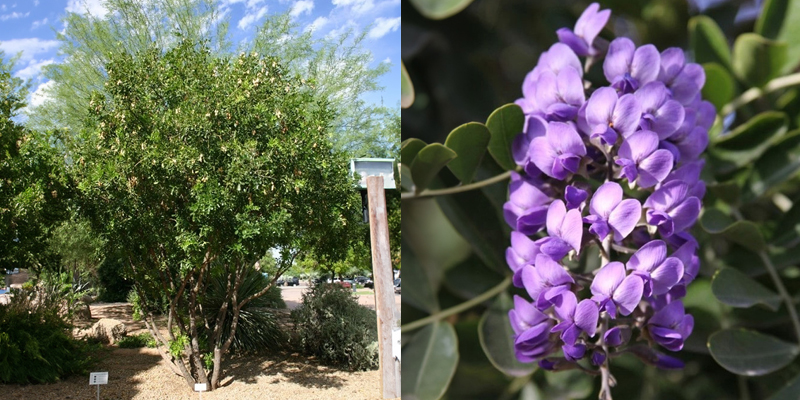
Texas Mountain Laurel